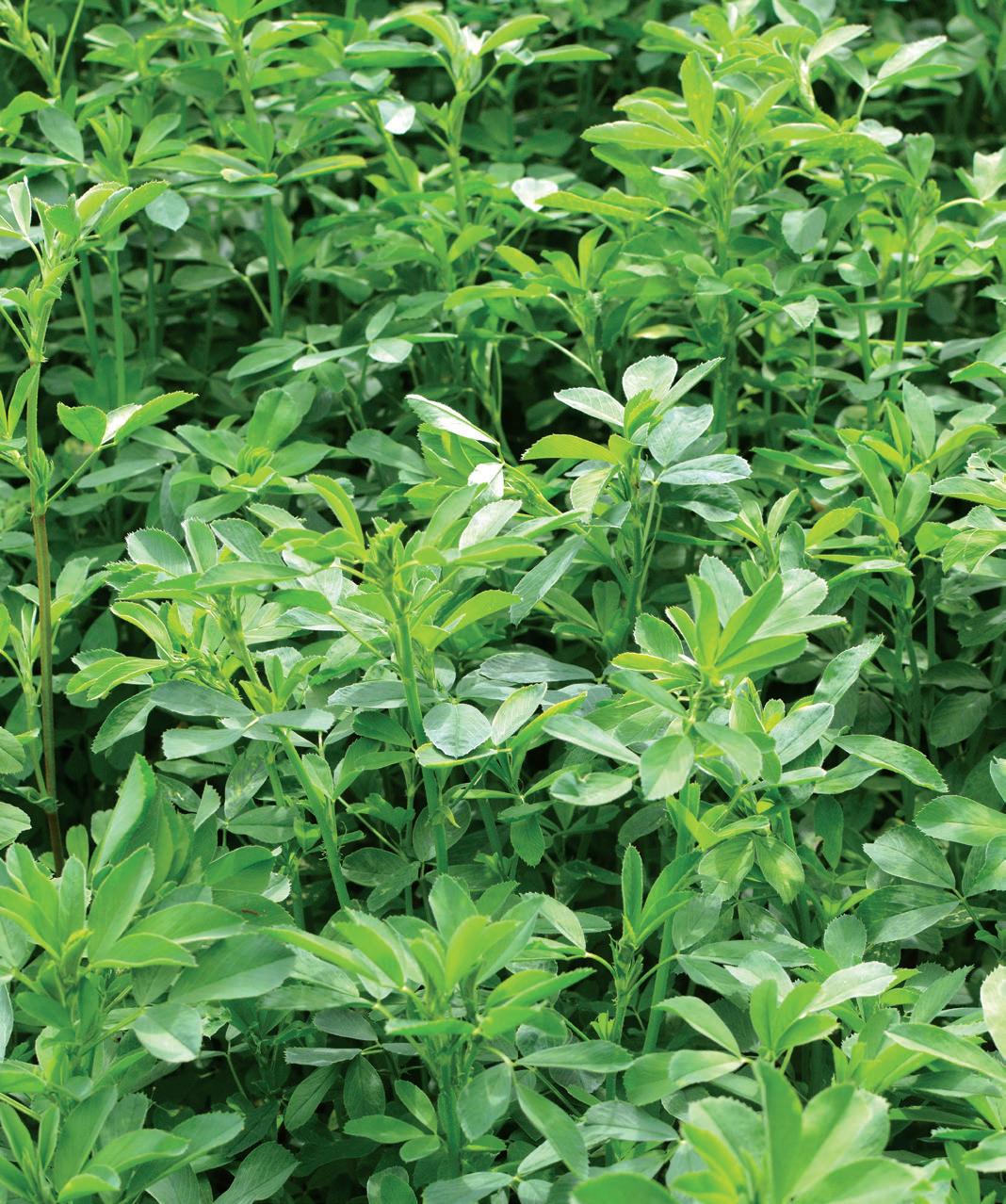

International Alfalfa Guide
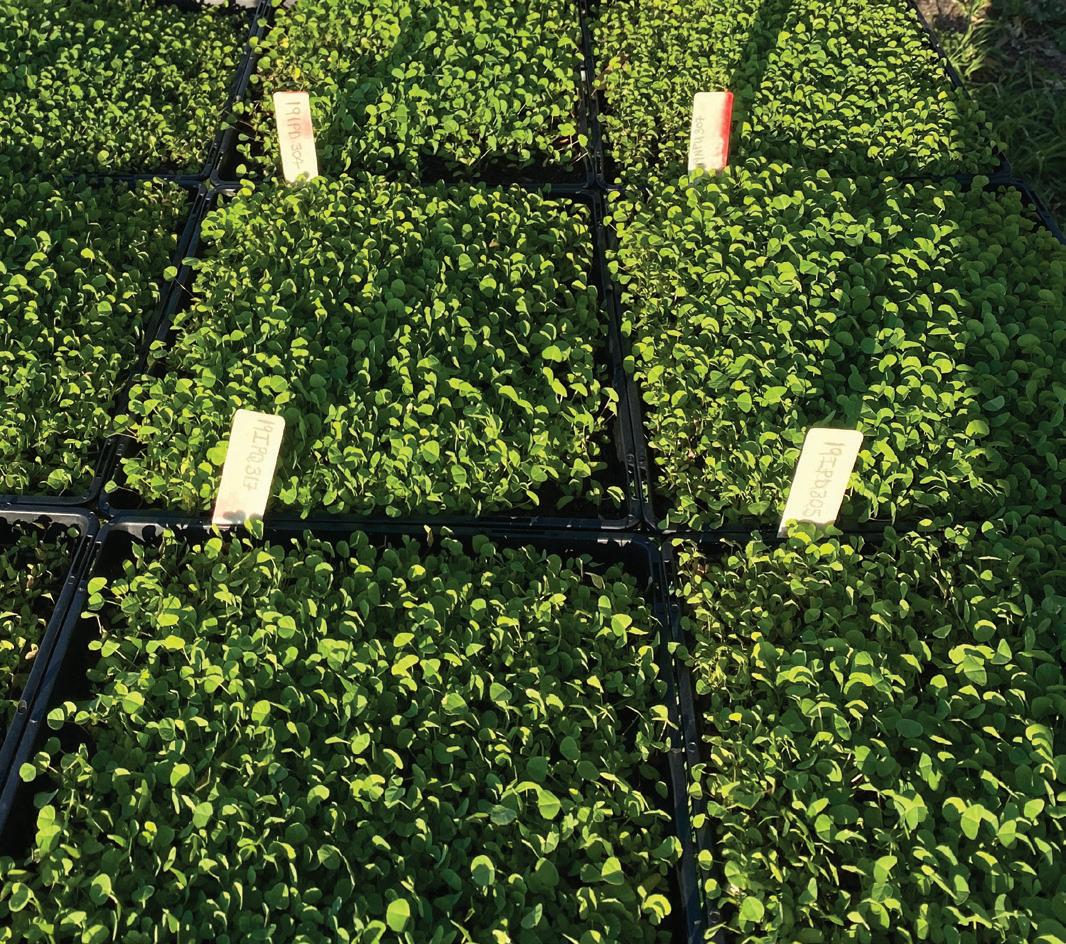
Leaders in global alfalfa breeding
Our global alfalfa breeding program is built to deliver top-tier varieties that perform where it matters: in the field.

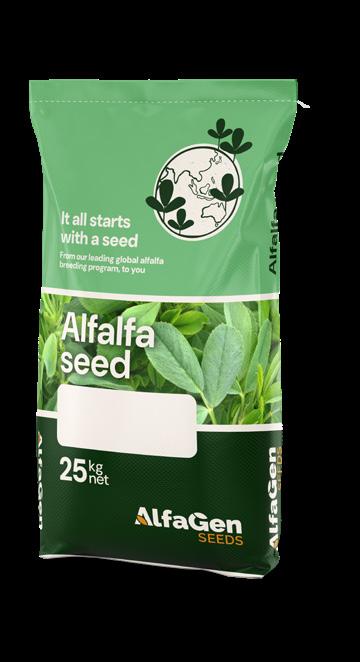
We bring together the best genetics from around the world to create alfalfa that stands up to pests, disease, and tough growing environments.

It all starts with plant selections from the world’s key alfalfa regions, carefully crossed to create new breeding lines. Every new breeding line goes through years of rigorous testing - dormancy, forage quality, salt tolerance, and pest and disease resistance – so only the best new genetics are chosen for release.
When you choose AlfaGen, you’re choosing alfalfa that has been bred, tested, and proven to perform.
It all starts with a seed
From our leading global alfalfa breeding program, to you

Why choose AlfaGen Seeds?
Our seeds travel the world to feed the future.
Across operations of all sizes, AlfaGen Seeds helps farmers turn potential into prosperity.
We know that a seed is more than just the start of a crop—it’s the foundation of thriving forage, a secure livelihood and a stronger community. That’s why our global alfalfa breeding program is focused on delivering superior seed with reliable yields.
With continuous innovation and a focus on quality, our seeds are designed to meet the demands of a changing world, helping farmers everywhere grow with confidence.
At AlfaGen Seeds, every seed we deliver is more than just a product—it’s a promise. A promise to help farmers nourish families, strengthen communities, and cultivate success.
It all starts with a seed.
World-leading alfalfa varieties
For over 40 years, AlfaGen Seeds has been at the forefront of developing world-class alfalfa varieties that deliver exceptional yield, quality, persistence, pest and disease resistance. Today, our breeding program, based at a dedicated research station in Australia, keeps us at the leading edge of alfalfa genetics for global markets.
Producing the highest-quality alfalfa is a cornerstone of our business.
Our products are grown in Australia, the United States, and Canada, enabling us to meet the diverse needs of international clients. These strategically chosen production locations allow us to supply the right varieties for different geographies, helping farmers maximise yield and profitability.
With production expansion on the horizon, AlfaGen is exploring additional international hubs to serve customers in Europe and Asia. This exciting development strengthens our ability to deliver top-tier alfalfa seeds where and when our customers need them most.
Our R&D and Sales teams work closely together, integrating customer feedback into every stage of product development - from plant selection to seed production. This direct input ensures our varieties meet real-world farming demands.
Our world-leading alfalfa breeding program follows a meticulous selection process. Plants sourced from top global alfalfa-growing regions are carefully crossed to produce first-generation (F1) seeds, which undergo rigorous trials for dormancy, yield, salt tolerance, and pest resistance. Only those meeting AlfaGen's high standards advance to seed build-up and commercialisation, a 5-7 year process that reinforces our commitment to supplying the best alfalfa solutions and guarantees elite genetics in every product - including some exciting new varieties on the horizon!
AlfaGen Seeds specialise in both dormant and non-dormant alfalfa varieties. Offering dormancy ratings of 3 to 10, with high forage yield, exceptional quality, and strong resistance to pests and diseases. Our genetics are designed to thrive in diverse conditions, including high-salinity areas, ensuring reliable performance across a range of environments.

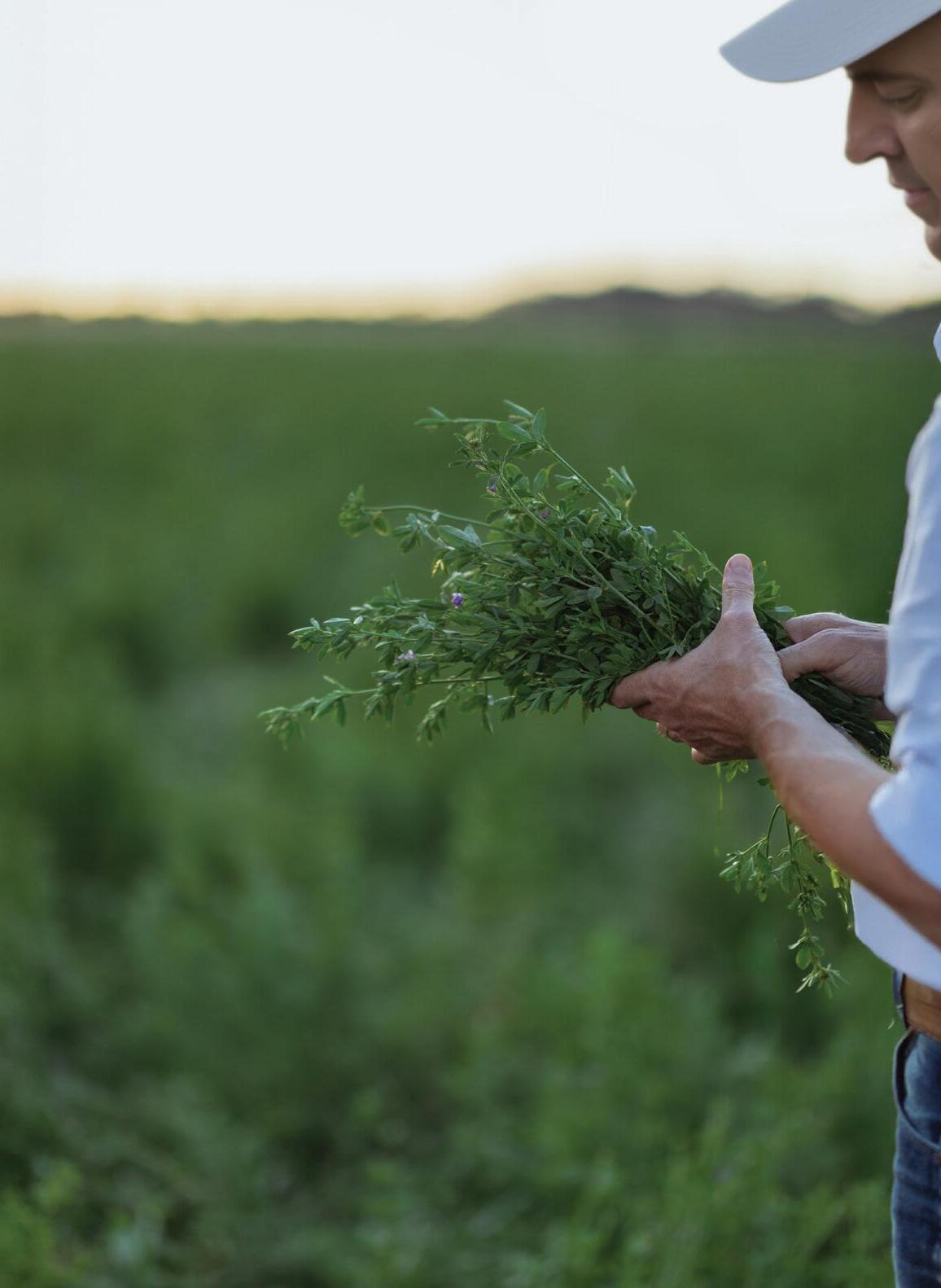
Understanding alfalfa dormancies
Alfalfa is a highly adaptable forage crop, with varieties bred for a range of climates and management systems. One of the key characteristics influencing its growth and persistence is dormancy - a trait that determines how actively the plant grows during cooler months.
Alfalfa dormancy is classified on a scale from 1 (highly dormant) to 10 (non-dormant). Highly dormant types are suited to colder climates where winter survival is critical, while non-dormant types thrive in warmer regions with extended growing seasons.
Choosing the right dormancy level is essential for optimising yield, persistence, and forage quality in different environments. Understanding how dormancy affects alfalfa performance helps growers select the best variety for their farming system.
Choosing the right dormancy level
Colder climates
Dormancy 1–5 for persistence and winter survival
Mild temperate regions
Dormancy 6–7 for a balance of yield and persistence
Dormancy 1–3: Highly dormant (winter hardy)
⊕ Best suited for cold climates with harsh winters
⊕ Strong winter survival and long-term stand persistence
⊕ Lower yield potential compared to more active varieties
Warmer climates
Dormancy 8–10 for maximum production
⊕ Ideal for grazing systems or rotational hay production in temperate regions
Dormancy 4–5: Semi-dormant
⊕ Suitable for diverse climates where both winter survival and good seasonal production are needed
⊕ Provides a good balance between persistence and winter growth
⊕ Higher persistence than winter active varieties
⊕ Suitable for both hay and grazing systems
Dormancy 6–7: Winter active
⊕ Higher forage yield potential but slightly lower persistence
⊕ Performs well in mild winters and warm temperate regions
⊕ Ideal for cut-and-carry systems and frequent hay or silage production
Dormancy 8–10: Non-dormant (highly winter active)
⊕ Strong year-round growth in warm regions
⊕ Higher yield potential but reduced stand life
⊕ Suited for intensive hay and silage production or grazing in warmer climates
Highly dormant & semi-dormant alfalfa
Dormancy characteristics
Seasonal growth
95% of total forage growth occurs in summer and 5% of total forage growth occurs in winter
Crown type Broad with crown below ground
Utilisation Specialist (hay/silage/chaff)
Long-term hay or pasture mix
High rainfall or irrigation
Dormancy characteristics
Seasonal growth
90% of total forage growth occurs in summer and 10% of total forage growth occurs in winter
Crown type Broader & lower crown
Dual purpose (grazing/hay)
Utilisation
Longer-term pasture or hay Dryland and irrigation
Dormancy characteristics
Seasonal growth
80% of total forage growth occurs in summer and 20% of total forage growth occurs in winter
Crown type Narrow & higher crown
Dual purpose (grazing/hay)
Utilisation
Short-term cropping rotation Dryland and irrigation
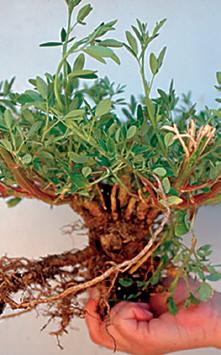
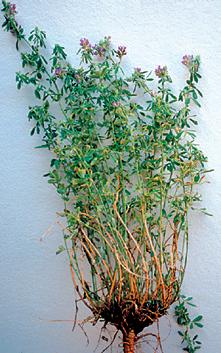

Alfalfa plant characteristic of highly dormant/semidormant varieties, demonstrating their subterranean crown
Alfalfa plant characteristic of winter active varieties, expressing low broad crown
Alfalfa plant characteristic of non-dormant varieties, showing the narrower and slightly raised crowns
Alfalfa best management practices
Field selection and preparation
Alfalfa can be grown on a range of soils from deep sands to heavy clays. For best yield and persistence, select fields with:
e Optimal range soil pH(CaCl2) 5.0-7.5
e Good natural slopes (for good drainage)
e Adequate fertility (nutrient levels)
A surface (0–10cm) and subsoil (10–60cm) soil test are recommended to determine the suitability for alfalfa. Soil acidity affects every stage of alfalfa production, from seedling establishment to stand survival.
Incorporate lime, as required, three to six months before sowing where topsoil pH(CaCl2) is below 5.0. Avoid soils with acid subsoils or high levels of subsoil exchangeable aluminium (above 5%). Apply gypsum to sodic soils (exchangeable sodium levels above 6%) to overcome surface crusting problems. Gypsum needs to be applied several months before sowing. Use deep ripping to break hard layers in the subsoil and to increase gypsum penetration to depth.
Herbicide residue risk
Alfalfa is highly sensitive to residual herbicides, especially those used in previous crops like cereals or pulses. Certain herbicide groups (e.g., Group B – sulfonylureas, and some Group I or Group G products) can persist in the soil and injure alfalfa seedlings, reducing establishment and yield. If herbicide residue is a concern, there are several management strategies available to minimise risk. These include, checking the label plant-back periods for any herbicides used in the previous season. Conducting a pot test over summer using soil from the paddock to assess herbicide residue activity. Delay sowing alfalfa for at least 12 months after applying residual herbicides known to affect legumes or herbicides with low carryover risk if alfalfa is in the rotation plan.
Before sowing
If weeds are present before sowing, cultivate the field or use knockdown herbicides. At sowing, pre-emergent herbicides should be applied in autumn, between four weeks and seven days, and in spring, between four weeks and three days, before sowing occurs. These herbicides are a cheap option to control winter weeds. Use an appropriate cropping phase and/or sprays to reduce egg-laying mite populations in the growing season before alfalfa establishment. Monitor fields for soil-dwelling pests and look for adequate soil moisture to 20cm at the time of sowing. Pre-irrigation (where possible) and sowing into moistened soil is the best practice for alfalfa establishment.
Fertiliser
Phosphorus is vital for early seedling growth and strong root development for better plant survival. Sow alfalfa with a minimum of 15–20kg of phosphorus per hectare (dryland) and 20-40kg per hectare (irrigation). The best practice is to apply fertiliser in a concentrated band 2-3cm below the seed for optimal nutrient uptake. Molybdenum added to the fertiliser ensures good nodulation for greater nitrogen fixation by the alfalfa. Lookout for adequate levels of sulphur, potassium, boron, and zinc.
Top-dress with P and K
After the seeding year, annual applications of Phosphorus (P) and Potassium (K) helps maintain stands and boost yields. Alfalfa is a heavy user of soil nutrients, especially K. The incidence of nutrient deficiencies of P and K is increasing, particularly in fields with a long-term history of cropping (without adequate fertiliser) or hay production. P deficient alfalfa has fine, spindly stems; the leaves become narrow and often turn purple. A deficiency of K can reduce yield and is essential for efficient nodulation, plant health (especially leaf disease and retention under stress), stand persistence, and winter hardiness. White spotting of the leaf margins is a common characteristic of K deficiency in alfalfa. A good fertiliser rule of thumb is to top-dress annually with 10-20kg/ha or after the first cutting (but before regrowth starts) with 6kg of P and 25kg of K per tonne of forage harvested during the season. Always remove weeds before top-dressing.
Use soil test results and strip tests to determine actual application rates needed for adequate fertility levels.
Available nutrients in relation to
Weed control
Management practices that maximise alfalfa growth will normally suppress weeds. The aim of post-emergent weed control in established alfalfa is to suppress the weeds from excessive competition or setting seed and not necessarily eradicate all the weeds.
Removing weeds in mid-winter with a selective herbicide (winter cleaning) improves spring production and quality and extends the useful life of the stand.
Sowing technique
Alfalfa should be sown into a level, firm, and slightly cloddy seedbed. A separate small seeds box and narrow points allow accurate seed placement with reduced soil disturbance. Plant alfalfa fields first in your cropping program. If stand density is patchy and below ten plants (dryland) or 40 plants (irrigation), consider stand removal and re-seeding. Alfalfa is suited to under-sowing with winter crops or direct drilling into crop stubble after the grain harvest. The seeding rate of the cover crop should be reduced by 50% and sown in skip (alternate) rows. A cover crop can help defray establishment costs and reduce soil erosion or wind sandblasting of alfalfa seedlings on sand hills and sandy flats.
Seed depth and alfalfa emergence
Optimum plant populations per square metre
Established plants per square m2 (minimum density highlighted)

Alfalfa best management practices continued
Early management
If the crop is planted under pivot or spray irrigation, consider a first irrigation 7-14 days after planting especially if temperatures are high, the soil is sandy or if the soil has a history of crusting on the surface. This irrigation may increase the chances of achieving the target plant population.
Seed treatment or bare earth emergence spray for red-legged earth mites may be required if mites are common in the area. Monitor seedlings carefully for aphids and use aphid-resistant varieties. After planting, avoid grazing or cutting until plants are at least 20cm high and well anchored. Alfalfa established under cover crops should be allowed to flower before first cut or grazing.
Grazing management
If grazing is part of the farming system, rotational grazing is the preferred management system for alfalfa. Graze the field for no longer than 2 weeks each time, followed by a 3-6 week rest period. This practice allows the plants to re-grow and replenish root reserves.
Larger groups of animals that fit the grazing unit (field size) allow quicker grazing and improve fodder utilisation. Alternatively, high stocking rates are greatly assisted with strip grazing and electric fencing.
Maintain flexibility with stocking rates and grazing management. Conserve excess feed as hay or silage to fill feed gaps or provide additional income. Rotational grazing with all alfalfa varieties during summer and autumn will maintain production and persistence at a high level.
Avoid grazing waterlogged paddocks because soil compaction and trampling will reduce yield and lead to poor persistence. To optimise stand longevity, allow alfalfa to reach midflowering once during the year.
Too frequent cutting or grazing for extended periods reduces overall yields, and reduces vigour, which allows weed invasion and ultimately results in the death of plants.
Irrigation
For high production of alfalfa, irrigation management should aim to avoid any moisture stress. Alfalfa is a deep-rooted plant once established and over 3 months old. This can allow for greater intervals between irrigations than other shallow rooted crops.
Irrigation layout and practice should ensure water penetrates at least 80-100cm and permit drainage within eight hours to minimise waterlogging. Do not irrigate immediately after hay is harvested to reduce the risk of scalding, particularly during summer. Time the final irrigation to allow adequate dry-down of the soil surface to prevent soil compaction by harvesting machinery.
Sub-surface drip irrigation
Low volume emitters, moulded onto the internal wall of a polyethylene tube and buried 200-300mm below the soil surface is recognised as the most efficient means of irrigating alfalfa (95% WUE) and is becoming increasingly popular as water availability declines and the cost of water increases. These sub-surface drip irrigation laterals are spaced across the paddock at distances from 0.3-0.8m apart, depending on soil and crop requirements. As the water (and fertiliser) is delivered right to the root zone (where it is needed) in measurable and adjustable quantities, it not only saves water but has a positive effect on plant productivity, longevity and health.
As opposed to flood and spray irrigation, excess water does not collect on the surface, and hence farmers can manage their cutting times more effectively, there is less weed growth, and less compaction is caused by harvesting equipment. Sub-surface drip irrigation also requires very little labour to operate and maintain.
Drip irrigation is generally more expensive than other forms of irrigation and requires good management of the infrastructure to ensure rodents and other soil pests do not damage pipes and fittings.

Nutrient removal
To maintain the health of alfalfa stands, replace soil nutrients removed. Soil and leaf tissue tests conducted annually in early spring help ensure other nutrients are adequate.
Nutrients
Sulphur (S)
Calcium (Ca)
Source: University of Nevada, Reno. All values on a dry matter basis. Intake = % of body weight, cp = % crude protein, adf = % acid detergent fibre, ddm = % digestible dry matter.
Re-sowing and crop rotation
High-producing alfalfa will generally require re-sowing after 4-5 years depending on the variety, crop management, soil type and weather. Winter active stands will often decline sooner than winter dormant ones. It is best practice to completely remove old alfalfa plants and allow at least three weeks between herbicide application and re-sowing. There are significant benefits in rotating alfalfa fields with winter cereal or canola crops to control weeds, use soil nitrogen, break disease and insect cycles, manage in-crop herbicide resistance, and increase whole farm profits.

Bud development

The appearance of 2cm long shoots from the crown on just over half the plants are the most reliable indicator of when to cut or graze for maximum productivity and persistence of alfalfa.
Contact us to explore premium alfalfa solutions tailored for global markets
Andrew Brooker
General Manager - International +44 7977 051 343 andrew.brooker@alfagenseeds.com
Rodney Coe International Sales Manager +61 417 680 158 rodney.coe@alfagenseeds.com
